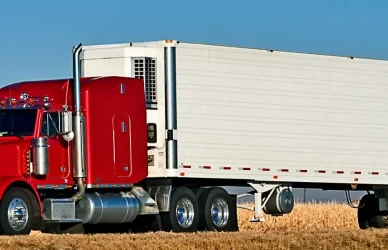On Wednesday, the Fed raised interest rates by 75 basis points (0.75%), likely supporting the ongoing decline in trucking demand that began in early March. The national Outbound Tender Volume Index (OTVI), which measures shipper requests for truckload capacity, has an inverse relationship with the federal funds rate — when one rises, the other falls. Truckload demand has been at an all-time high while interest rates have been near zero.
The Federal Reserve’s primary goal is to maintain economic stability by keeping prices stable and maximizing employment. Since the beginning of the year, inflation has been above what the Fed considers acceptable — 3% — prompting the Fed to raise interest rates at an unprecedented rate beginning in March. Inflation is a priority to the Fed.
The primary goal of raising interest rates is to dampen demand, particularly for goods. While the increase in interest rates only has a direct impact on the interbank rate, or the rate at which banks borrow from each other to meet reserve requirements, it also serves as the basis for other interest rates that influence almost every other type of financing and savings account in the United States.
Banks essentially use the funds rate as a cost basis for all other products. The difference between the funds rate and the offered loan rate is how banks fund and profit their operations. As a result, when interest rates rise, so do other rates in general. Because the cost of borrowing money is rising, businesses must spend more on financing large purchases. Most businesses do not carry large amounts of cash because their primary goal is to increase in value, which cash loses over time due to inflation.
Freight Waves reported, “there was a 19% drop in truckload demand over the course of five weeks starting in March, before the Fed started raising interest rates. This drop has pushed truckload spot rates excluding fuel from a point where they were 63% higher than pre-COVID levels to a current value of 17% over September 2019.”
The Fed must, of course, look beyond short-term pain and individual sector interests in order to make the best decisions for the overall health of the economy — no small task — but recent history suggests that its understanding of the current environment may be hazy, and trucking companies should brace for further drops in demand.











